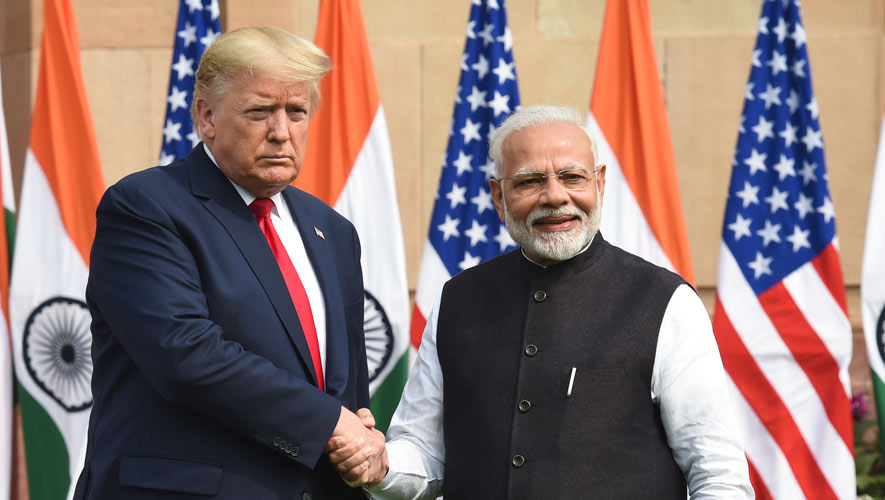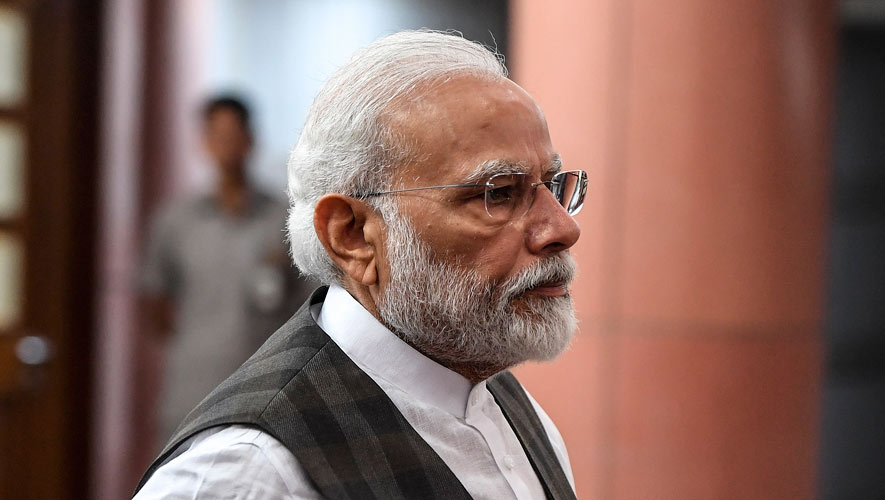Chinese think tank Anbound’s research team recently published a preliminary study detailing what it called “Modi’s Strategy”, with reference to India’s Prime Minister Narendra Modi. The team found that this national strategy promotes the Western ideals of freedom and justice, with intentions to develop India into a global power with unprecedented robustness and economic vitality. Following a more prolonged and thorough study however, the team discovered certain perplexing elements to the movement. Behind all the massively impactful Western ideals that “Modi’s Strategy” has towards the world, East Asia in particular, a hidden danger lurks behind the social foundation of such a strategy: Hindu Nationalism.
For the latest Cambodian Business news, visit Khmer Times Business
Looking back at Dec 11, 2019, the Indian government passed the Citizenship Amendment Act (CAA) 2019. The new amendment law stipulates that as of Dec 31, 2014, all Pakistani, Bangladeshi and Afghan migrants who are “religiously persecuted” and were previously classified as “illegal immigrants” can now legally apply for Indian citizenship. The “illegal immigrants” are comprised of six religious groups, namely Hindus, Sikhs, Buddhists, Jains, Zoroastrians and Catholics.
It’s interesting to note that approximately 80.5 percent of Indians practise Hinduism, 15 percent are Islamic, 1.9percent are Sikhs, 0.4 percent practise Jainism and 2.3 percent are Christians. Put simply, the remainder, who are Muslims, were intentionally excluded from the new law. Truthfully speaking, there are objective reasons behind the law’s exclusion of Muslim migrants (Pakistan, Bangladesh, and Afghanistan are Muslim-populated countries and it is difficult to subject Muslims to “religious prosecution”). The new law and the Kashmir issue have become more intense and widespread in India, resulting in a series of protests. When the US President Donald Trump visited India and announced publicly that the US-India relations are at a peak, turmoil broke out in northeast Delhi, tragically causing the death of 46 and injuring more than 200. Interestingly, the casualties did not stem from clashes between the military police and the protesters, but Muslim protesters and Hindu supporters, with large casualties arising from gunshots.
Kapil Mishra, leader of the Bharatiya Jana Sangh Party (BJP – also Modi’s party) known for his Indian nationalism, even publicly warned the Delhi police to remove the protesters from the relevant areas within three days, or he would forcibly curb the protests himself. His words were not taken lightly, given the BJP possesses the authority to bypass the public authorities to do so. This is all because of the presence of an ubiquitous social organisation in India that is backing up the BJP, known as Rashtriya Swayamsevak Sangh (RSS, also known as the National Volunteer Organisation).

Founded in 1925, the RSS is a right-wing Hindu nationalist organisation. When it was first established, the RSS was a nongovernmental organisation dedicated to promoting the teachings and lifestyles of Hinduism.
However, after being influenced by European right-wing social groups such as the Nazis and Sturmabteilung in the early days of World War II, the organisation gradually adopted more paramilitary characteristics. In fact, the assassination of Mahatma Gandhi was carried out by a “former” RSS member too, which led the Indian government to ban the RSS for the very first time. Unfortunately, with Hindus being the vast majority of India’s population, the RSS did not fade into obscurity and instead continued to grow, reaching to all castes in Indian society.
As of 2014, the RSS had 6 million registered members, including Modi and most of his cabinet members. The RSS has established thousands of schools in India and gathering places while promoting the concept of Hindu supremacy. The organisation also regularly holds paramilitary training for its members. The RSS has also established Sangh Parivar, a “big family” with itself as the axis and its members include but are not limited to the 23 million members of the BJP, 8 million members of the Bharatiya Kisan Sangh (Indian Farmers’ Union), no less than 1,000 members of the Bharatiya Mazdoor Sangh (Indian Labourers’ Association), 1.8 million members of the Rashtra Sevika Samiti (National Volunteer Association for Women), 2.8 million members from the Akhil Bharatiya Vidyarthi Parishad (All India Students’ Council) and many more unnamed. The RSS is, to some extent, the de facto ruler of India, and the BJP is just the RSS’s shadow on the political scene. Had it not been for the support of the RSS, the BJP would have never been able to emerge victorious in India’s last general election.
The logic of development behind “Modi’s Strategy” is clear. The BJP is, in fact a subsidiary of the RSS which makes the movement a part of the organisation’s development strategy too. This also makes Modi a political representative entrusted by the RSS in the Indian political arena. Modi’s ideal is one and the same with the RSS, meaning he will help to realise the organisation’s vision of “Great India”.

Theoretically speaking, Modi’s government will have two choices in the future. One, Modi will use his political reputation within India and abroad to slowly reverse the BJP-RSS roles and, in doing so, temporarily quelling the civil conflict in India. This will inevitably make him India’s total leader in political parties and politics. Two, Modi can opt to continue the Hindu nationalist ideas, that is to achieve the dream of “Great India”, and to continue to advance the path the RSS had abandoned. Sadly, the latter will only deepen civil conflicts and cause further tensions in its surrounding countries, as well as create more conflicts in values with the West. Considering the relationship between Modi’s government and the RSS, the need for an Indian social grassroots organisational system, the domestic political situation in India and BJP’s competition with the Congress Party, it is more likely for Modi to opt for the latter.
As time goes on, the conflicts in India’s foreign strategy and domestic politics will begin to become more apparent. On a domestic level, the conflicts between Hindus and Muslims will be the most critical issue for the time being. Because of its huge population ratio, India has nearly 200 million Muslims, while the total population of the Middle East is 490 million. For BJP and Modi, who are dependent on the Hindus, maintaining a balance in the conflict that is intensifying between 1 billion Hindus and 200 million Muslims while achieving the objectives of Hindu Nationalism is obviously a huge challenge.
Once Modi’s government chooses policies to suppress the Muslims, the Indo-Pakistan relations, India’s relations with other Muslim countries in the region and even India’s relations with Middle Eastern countries will be affected. Another key issue in that is there will be growing inconsistencies between domestic and foreign policies within Modi’s government, and the ideals of “freedom and justice” that Modi is trying so hard to promote will fail. As a matter of fact, Modi’s current approach has stirred a dissatisfaction in the West and even Western media have begun to label Modi as an “authoritarian” leader. While US President Donald Trump and Modi jointly declared that the US-India relationship is at an all-time high, it will be very difficult for the relations to make substantial progress considering the communal problems in India and they may regress at any time. In fact, the political ecology of India and the extremist countries and regimes that Modi and the RSS are both in is only separated by a thin layer and changes could happen any time.
Chan Kung, Chen Gong and Yu Pan are researchers at Anbound think tank, based in China




